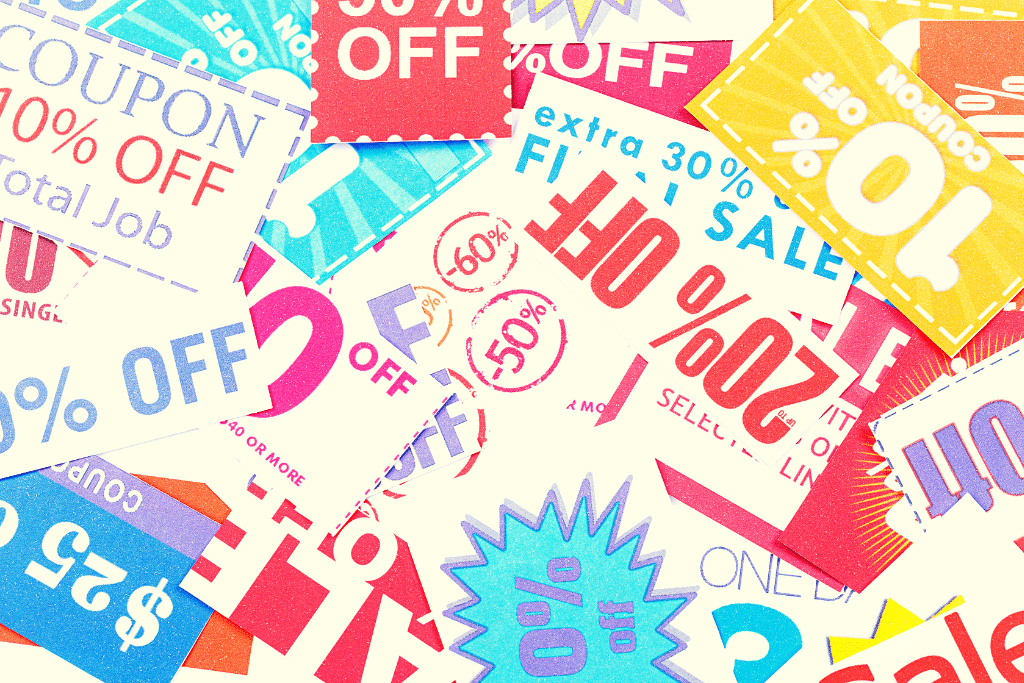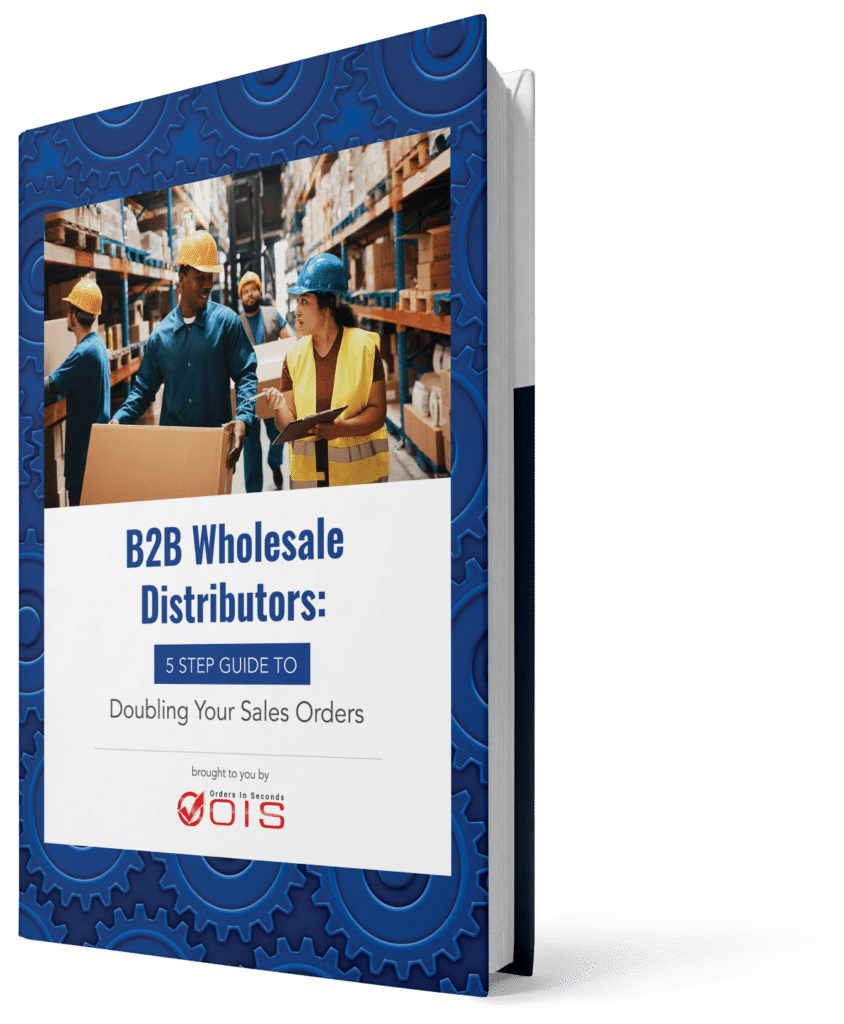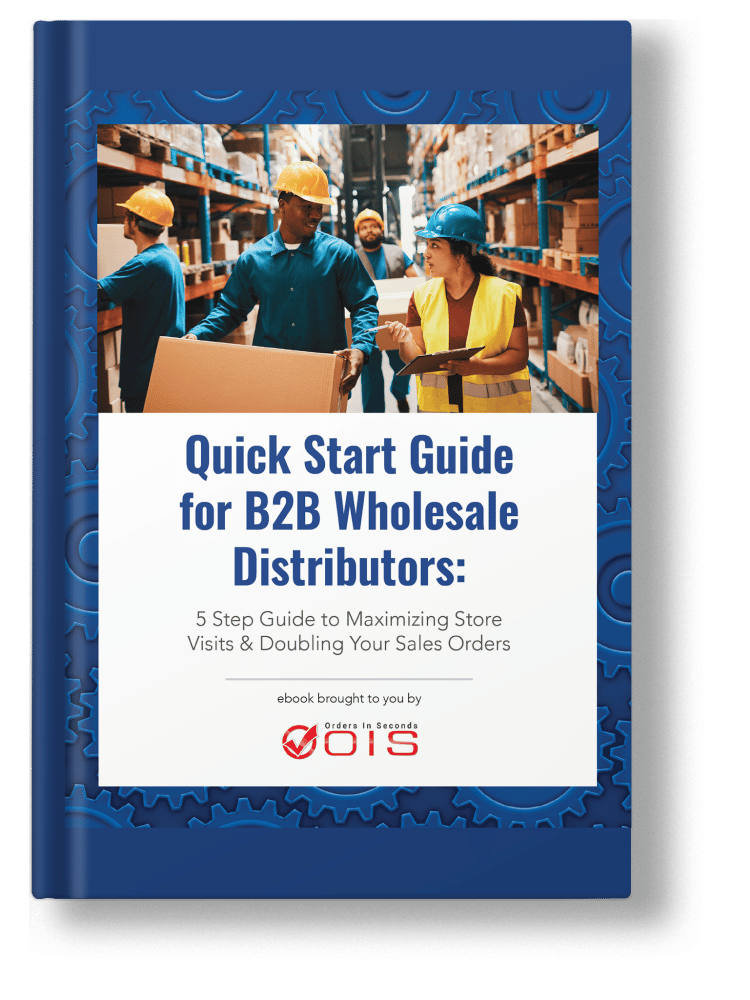Business-to-business (B2B) companies generally use marketing strategies that can differ from those of companies that market directly to the customers. Trade promotion refers to a set of marketing activities aimed at increasing product sales and market presence through incentives and targeted campaigns directed at supply chain partners and consumers. One way a B2B company can expand its clientele, foster client loyalty, and boost profits is through trade sales promotion. Trade spend is a key component of trade sales promotion, used to incentivize retailers and wholesalers to support and promote products. Co op advertising, a collaborative marketing strategy where businesses pool resources for shared advertising efforts, is an effective approach within trade sales promotion. Knowing about trade sales promotions can help you succeed in the field of B2B marketing if you work in B2B sales or marketing or are considering a role in this industry. In this article, you will learn what trade sales promotions are, various types of trade promotions, how trade sales promotions fit into a company’s marketing strategy, and their advantages.
Introduction to Trade Promotions
Trade promotions are a crucial component of a company’s marketing strategy, designed to drive sales, build brand awareness, and foster long-lasting relationships with retailers, distributors, and other distribution channel partners. By offering incentives, such as discounts, rebates, and free products, trade promotions encourage retailers to stock and promote a product or service, ultimately leading to increased sales and revenue growth. A trade promotion strategy outlines the specific promotional strategies used to achieve business objectives, differentiating between trade promotions aimed at intermediaries and consumer promotions targeting end customers.
Effective trade promotions require strategic planning, a deep understanding of the target market and its behavior, and a clear comprehension of the benefits of trade promotions, including enhanced brand visibility, increased customer loyalty, and a competitive advantage. Different promotional strategies can be tailored to the needs and preferences of the target market to maximize impact and effectiveness.
What is a Trade Promotion?
Trade promotions are marketing campaigns and promotions put together by brands with the goal of boosting sales at a retailer, and rewarding both the retailer and the customer. A trade promotion’s main objective for brands is to boost sales through the chosen retail channels. Trade promotions work by incentivizing retailers to stock, display, and prioritize a brand’s products, which increases product visibility and helps expand distribution channels.
Cooperative advertising is one such marketing strategy used by manufacturers and CPG brands to incentivize retailers, wholesalers, and distributors to promote and sell their products. Trade spending is a key investment brands make to promote their products and drive demand through retail partners. This approach is popular with manufacturers and wholesalers who provide incentives to the businesses they supply. Trade sales promotions can also be essential in building partnerships and increasing the presence of a brand’s products at retail and wholesale levels.
Consumer Promotion vs Trade Promotion
Consumer and trade promotions are methods of stimulating short-term consumer demand, usually for products sold by retailers. Sales contests are a strategic method to boost consumer interest in products, encouraging greater engagement with the brand. Both achieve the company’s marketing goals in the short term. Both consumer and trade promotions are designed to increase sales by boosting demand and improving product visibility. Consumer promotions can attract new customers by creating product demand and increasing brand awareness, while trade promotions often focus on rewarding existing customers through special offers or promotions to encourage repeat purchases and loyalty. However, they have some differences. Consumer promotions are designed to encourage consumers to increase their purchases and prefer one brand over another, ultimately leading to enhanced sales and customer loyalty.
a) Different Target
Trade promotions target retailers, encouraging retail stores to stock and promote products, while consumer promotions are aimed at consumers.
b) Different Objectives
Trade promotions aim at building relationships between manufacturers and retailers. Consumer promotions, on the other hand, are incentives directed toward the end user. They are strategies designed to engage consumers in buying the products, while trade promotions encourage sales of products that are to be resold and therefore involve a business-to-business relationship. By offering incentives such as free samples, retailers encourage customers to try new products, which can stimulate demand and foster brand loyalty.
Trade Promotion Management
Trade promotion management is at the heart of a successful marketing strategy for brands looking to maximize the impact of their trade promotions. This process involves the careful planning, execution, and evaluation of various types of trade promotions, such as discounts, in-store displays, and cooperative advertising, all aimed at driving sales and increasing brand awareness. By leveraging trade promotion management software, companies can streamline their trade promotion efforts, monitor key performance indicators, and make data-driven decisions that enhance overall campaign effectiveness.
Effective trade promotion management enables businesses to allocate resources efficiently, coordinate promotional activities across multiple retail partners, and ensure that each trade promotion aligns with broader marketing objectives. With the right tools and strategies in place, brands can optimize their promotional investments, respond quickly to market trends, and achieve measurable results in driving sales and building long-term relationships with retailers and distributors. Ultimately, a well-executed trade promotion management strategy empowers companies to stay competitive and achieve sustained revenue growth.
Different Types of Trade Promotion
Brands and wholesalers can promote their products using a variety of trade promotion techniques. Each type of trade promotion is designed to achieve specific goals, such as increasing product visibility, encouraging larger orders, or providing added value to customers. Here are some of the most common types of trade promotions:
Exclusive Deals
Exclusive deals are a type of trade promotion aimed at retail partners such as distributors and wholesalers. These deals are techniques employed to incentivize these partners to increase product stock and promote items more aggressively. By offering exclusive deals, brands can encourage bulk purchases by retail partners through discounts, incentives, and special offers, which helps improve visibility and strengthen relationships within the supply chain.
Trade Allowances
Trade allowances are a crucial element in marketing strategies aimed at incentivizing retailers, wholesalers, and distributors to stock and sell products. These allowances are used alongside other promotional tactics such as discounts and in-store displays to enhance product visibility and sales. Trade allowances can also motivate retail partners to make bulk purchases, further increasing order volumes and shelf space.
Ultimately, the goal of these trade promotion techniques is to generate more sales by boosting product demand, encouraging bulk purchases, and providing added value through various types of trade promotions such as bundle offers and promotional packages.
1) Discounts & Markdowns
Offering discounts or markdowns to certain channel partners can appeal to the most price-sensitive segment of buyers. A price discount is a common form of trade promotion used to incentivize larger purchases.
Discounts and markdowns can take on a variety of shapes, including price reductions, percentage off purchases, tiered discounts (the more you spend, the more you save), and special offers like “buy X, get Y at a discounted price/% off/free, etc.”
Consider using a mobile sales software that delivers personalized promotions depending on where each customer is along their individual buying journey.
Timing is equally important. To create urgency and speed up sales, trade promotions should have a clear, finite duration. Offer various promotions based on the occasion and season, such as back-to-school deals or exclusive Christmas discounts.
2) In-store Displays
In a crowded retail setting, in-store displays like end caps or point-of-purchase displays can be a great way to draw attention to your products. These displays also help increase brand visibility in retail environments, making your brand more recognizable to shoppers and strengthening relationships with retailers and distributors. They come at an additional cost just like point-of-purchase (POP) placements that tempt customers to make impulsive purchases while waiting to pay.
The use of floor decals, posters, banners, life-size display stands, and in-person product demonstrations are just a few examples of in-store display items that can be used to draw customers’ attention.
Working with your retail partners to enhance your visual merchandising and product presentation can lead to real revenue increases.
3) Bundles
Product bundles are an excellent way to boost sales of related goods. Product bundles come in a variety of forms, such as those based on holidays, fashion trends, back-to-school occasions, Black Friday sales, Cyber Monday sales, and more. Preset bundles, where products are packaged into a single offer, such as “buy 20 shampoos and 20 conditioners at a reduced price,” and dynamic bundles, where customers create their own bundles, such as “buy X items from a certain list, choose Y items from another,” are additional examples that are popular in the food and beverage industry and the beauty industry.
4) Rebates
Rebates provide your customers with money back under specific circumstances. An illustration is when a brand returns a portion of the purchase price to the customer after they purchase a predetermined quantity or value of goods within a given time frame. In contrast to discounts, which are subtracted at the time of purchase, rebates are given after payment.
5) Sales Contests
Sales contests reward retailers with gifts or even special bonuses if they sell more of your products, either within a single store or across multiple branches. Find out what drives your retailers. Cash and gifts are fine, but some people will be inspired by opportunities to grow and succeed through experiences (i.e., concert tickets, a day at a luxury spa, and more).
Encouraging Retailers
Encouraging retailers to actively stock and promote your products is a cornerstone of effective trade promotions. By implementing targeted trade promotion strategies—such as offering exclusive deals, providing financial rebates, and supporting in-store displays—brands can incentivize retail partners to prioritize their products on shelves and in marketing efforts. Point of purchase displays and other engaging in-store tactics not only enhance product visibility but also encourage consumers to make purchasing decisions on the spot.
Building strong, collaborative relationships with retail partners is essential for increasing brand visibility and driving sales. When retailers feel supported through exclusive deals and promotional investments, they are more likely to champion your brand, leading to improved customer loyalty and a stronger competitive advantage in the marketplace. By working closely with retailers to design and execute effective trade promotions, companies can boost revenue growth, foster brand loyalty, and ensure their products stand out in crowded retail environments. This partnership-driven approach is key to achieving long-term success and maximizing the return on trade promotion efforts.
Marketing Strategy
A well-crafted marketing strategy is essential for successful trade promotions. Trade promotions are a key part of business operations for many companies, as they play a significant role in driving product visibility and sales performance. This involves identifying key performance indicators, setting clear objectives, and allocating resources effectively. Trade promotions represent a strategic investment in driving sales and market share. This strategic investment directly impacts a company’s competitive position and long-term growth. Trade promotion management software can be a valuable tool in this process, enabling companies to optimize their trade promotion efforts, track performance, and make data-driven decisions. By leveraging trade promotions as part of a broader marketing mix, companies can boost sales, increase brand awareness, and drive revenue growth. Additionally, trade promotions can be used in conjunction with other marketing strategies, such as digital marketing, consumer promotions, and sales promotions, to create a comprehensive and effective marketing campaign.
Benefits of Trade Promotions
Brands and wholesalers can reap numerous benefits from effective trade promotions. These include enhancing brand visibility, which is crucial in the competitive consumer packaged goods (CPG) landscape. Effective trade promotions not only drive sales but also play a crucial role in establishing stronger relationships with trade partners, helping brands maximize their impact and success in the marketplace. Effective trade promotions management is essential for maximizing the benefits of trade promotions, ensuring that investments are strategically managed for optimal results.
Enhanced customer loyalty
Trade promotions can significantly enhance customer loyalty by providing incentives that encourage repeat purchases. By fostering greater consumer engagement through real-time data access and collaborative planning, these promotions not only drive immediate sales and customer engagement but also incentivize trial and build lasting relationships with retailers, contributing to sustainable long-term growth.
1. Increased order size
When done properly, trade promotions, according to research by Price Waterhouse Coopers, can boost your bottom line by 10% to 15%. To further serve consumers, promotions expose products to your customers and may influence them to buy ones they ordinarily wouldn’t. Additionally, it makes upselling and cross-selling products simpler.
2. Faster order-to-cash cycles
Every business must operate quickly, and FMCG companies are no exception. Your revenue will rise as a result of accelerating sales, which will also optimize your supply chain and cut costs. Utilize the feeling of urgency or FOMO (fear of missing out) as a motivator to buy and accelerate sales.
3. Improved profitability
FMCG businesses are constantly under pressure from thin profit margins and fierce competition. Trade promotions, however, are a real asset. Since the cost of goods is fixed and the cost of sales is fairly constant across all opportunities, increasing sales will actually increase your gross profit margins for each sales activity.
4. Enhanced customer loyalty
Trade promotions can result in better deals for consumers. You can start to surpass your rivals in terms of customer loyalty when consumers know they can go to their preferred retailers and get your products for a great price.
5. Stronger relationships with distribution channels
In wholesale, relationships are crucial, and having a history of profitable promotions aids brands and manufacturers in forging closer bonds with important stakeholders.
Measuring Effectiveness
Measuring the effectiveness of trade promotions is critical to understanding their impact on sales, revenue, and brand visibility. Key performance indicators, such as sales volume, market share, and customer loyalty, can be used to evaluate the success of trade promotions. Companies can also use trade promotion management software to track and analyze the performance of their trade promotions, identifying areas for improvement and optimizing their strategies accordingly. Overseeing promotions is essential to ensure that promotional activities are effective and aligned with overall business goals. Additionally, joint business planning between suppliers and retailers can improve the effectiveness of trade promotions by fostering collaboration, aligning strategies, and sharing data for mutual growth. By regularly assessing the effectiveness of their trade promotions, companies can refine their approach, allocate resources more efficiently, and ultimately drive higher sales and revenue growth.
Common Challenges
Despite the numerous benefits of trade promotions, companies often face challenges in implementing and managing these campaigns. Common obstacles include budgeting and ROI calculation, effective communication with trade partners, and ensuring legal and regulatory compliance. Additionally, companies may struggle to balance the needs of multiple trade partners, manage competing priorities, and maintain a consistent brand message across different distribution channels. To overcome these challenges, companies can leverage trade promotion management software, invest in strategic planning, and foster strong relationships with their trade partners.
Future Outlook
The future of trade promotions is likely to be shaped by advances in technology, changes in consumer behavior, and evolving market trends. As companies increasingly adopt digital marketing strategies, trade promotions will need to be integrated with online channels, such as social media and e-commerce platforms, to maximize their impact. Furthermore, the use of data analytics and artificial intelligence will become more prevalent in trade promotion management, enabling companies to optimize their campaigns, predict sales patterns, and make more informed decisions. By staying ahead of the curve and adapting to these changes, companies can ensure that their trade promotions remain effective, driving sales, revenue growth, and brand recognition in an increasingly competitive market.
Final Thoughts
There are so many benefits wholesalers can reap through trade promotions. Marketing activities play a crucial role in stimulating demand and increasing sales among supply chain partners. To maximize your trade promotions, consider adding B2B software that enables you to keep track of your sales across multiple platforms in real time. Promotional support is also vital in collaborative marketing strategies where partners pool resources for advertising. This will enhance your strategies and optimize the benefits of your trade promotion. For more information, feel free to contact Orders in Seconds.





